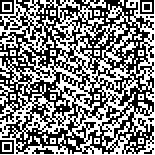丁珊珊,李改燕,王婕,等.“六字诀”训练治疗脑卒中后运动性言语障碍患者的多中心临床研究[J].中华物理医学与康复杂志,2021,43(10):890-894
扫码阅读全文

|
| “六字诀”训练治疗脑卒中后运动性言语障碍患者的多中心临床研究 |
|
| |
| DOI:10.3760/cma.j.issn.0254-1424.2021.10.006 |
| 中文关键词: 脑卒中后运动性言语障碍 六字诀 传统呼吸训练 基础构音训练 |
| 英文关键词: Post-stroke dysarthria Liuzijue qigong Breathing training Articulation training |
| 基金项目:综合医院中西医结合专项建设一般项目(ZHYY-ZXYJHZX-2-201715) |
|
| 摘要点击次数: 5854 |
| 全文下载次数: 6087 |
| 中文摘要: |
| 目的 观察“六字诀”训练对脑卒中后运动性言语障碍患者呼吸控制能力的改善作用。 方法 采用随机数字表法将157例脑卒中后运动性言语障碍伴呼吸控制异常患者分为观察组及对照组。对照组给予传统呼吸训练及常规构音训练(包括构音器官训练、语音训练等),观察组在常规构音训练基础上辅以“六字诀”训练,“六字诀”发音顺序为嘘、呵、呼、呬、吹、嘻,采用鼻吸口呼方式进行训练。于治疗2周后对2组患者进行疗效评定,以改良Frenchay构音障碍综合评价(FDA)结果为主要观察指标,以最长声时(MPT)、最大数数能力(MCA)、响度等级为次要观察指标。 结果 治疗后2 组患者改良FDA评分、MPT、MCA及响度等级均较治疗前明显改善 (P<0.05);并且治疗后观察组改良FDA改善值[3.99(3.49-4.48)分]、MPT改善值[3.38(2.86-3.90)s]及MCA改善值[3.01(2.43-3.59)s]亦显著优于对照组水平(P<0.05),而响度指标改善幅度与对照组间差异无统计学意义(P>0.05)。 结论 “六字诀”训练联合常规构音训练能更有效改善脑卒中后运动性言语障碍患者呼吸功能及综合言语能力,该联合疗法值得临床推广、应用。 |
| 英文摘要: |
| Objective To document any improvement in the breathing control of stroke survivors with dysarthria after practicing Liuzijue qigong. Methods A total of 157 stroke survivors with dysarthria and abnormal respiration control were randomly divided into an observation group and a control group. Both groups were given traditional breathing training and basic articulation training (including articulatory organ training and speech training). The observation group also received training in Liuzijue qigong. It requires inhaling through the nose and exhaling through the mouth while producing the speech sounds xu, he, hu, si, chui and xi. The training lasted two weeks. Both groups were then evaluated using the modified Frenchay dysarthria assessment. Maximum phonation time, maximum counting ability and volume were also recorded as secondary indexes. Results After the 2-week intervention, significant improvement was observed in the average scores on all of the indexes, with all of the observation group′s average scores except for volume significantly better than those of the control group. The average volume scores were significantly improved, but not significantly different. Conclusion Supplementing basic articulation training with Liuzijue qigong can improve respiratory function and the speaking ability of stroke survivors with dysarthria. It is worthy of wider clinical application. |
|
查看全文
查看/发表评论 下载PDF阅读器 |
| 关闭 |